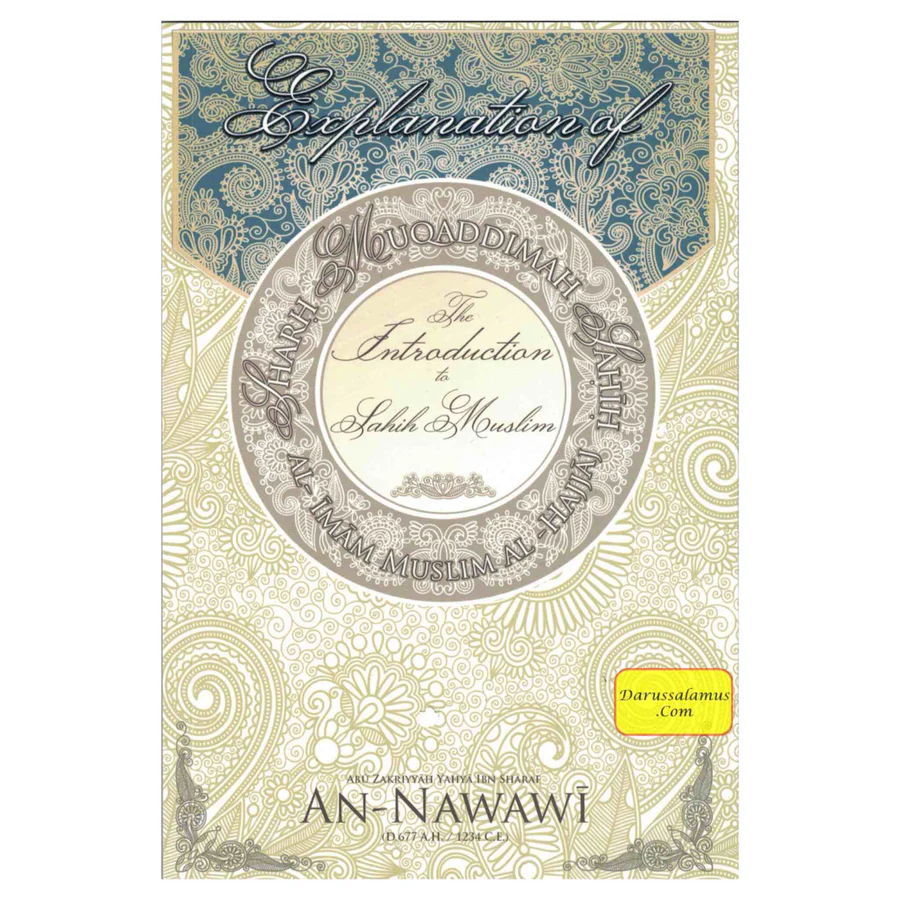Explanation of The Introduction to Sahih Muslim is one of the most excellent collections of hadith in Islam, ranking in position only after Sahih al-Bukhari. While classified by Imam Muslim ibn al-Hajjaj, it occupies a revered place in the hearts of Muslims all around. But before plunging into the great treasury of hadiths contained within Sahih Muslim, it becomes very important to understand why the introduction itself becomes so important and sets the tone for the rest of the work.
Understanding Sahih Muslim
Sahih Muslim is the backbone of Islamic scholarship. This book contains thousands of narrations about sayings, actions, and approvals of Prophet Muhammad (PBUH). Imam Muslim collected these hadiths by very stringent criteria for authentications. The book can be said as a guide for jurisprudence, ethics, and beliefs in Islam.
Imam Muslim was very careful about the hadith collection methodology. He was always making trouble to inquire about the autobiographies of all the narrators and was only writing people who have a good memory and integrity on the pages of this book. This ensured the authenticity of the narrations that gave Sahih Muslim its unchallengeable status in the Muslim world.
The Role of the Introduction in Sahih Muslim
A preface to Sahih Muslim is an essential part of understanding the contents of the book; it can allow readers to understand the context and criteria that provide a background for the hadiths collected. In this case, the introduction of Imam Muslim was not just a preliminary aspect but a vital part of his work that assisted readers in understanding the framework within which the hadiths should be interpreted.
Of all the components of the introduction, the most pertinent and worthy of attention is the standards that the Imam Muslim would use in choosing his hadiths: reliability of narrators, the uninterrupted chain of transmission, known as the continuity of the isnad, and finally, the conformity of the content with the Qur’an and the known teachings of Prophet Muhammad (PBUH).
Imam Muslim’s Standards of Authenticity
Imam Muslim did not gather any hadith he would come across. Rather, he chose only those that were most authentic. The very first criteria of selection was the integrity of the narrators. Imam Muslim used to ensure that the narrators were trustworthy persons with a good memory, known for piety and moral uprightness.
The second requirement was the continuity of the chain of narration. A hadith was not true unless every narrator in the chain had received it directly from the one in front of him. This direct chain of transmission characterized an authentic hadith.
Imam Muslim ensured that the hadith compiled in the book complied with the version of the verses of the Qur’an and Prophetic established practices. The collection did not include hadith contrary to the Qur’anic verses and established practices of the Prophet (PBUH).
The purpose of the Introduction by Scholars and students
An introduction to Sahih Muslim is invaluable for scholars and students of Islamic knowledge. Here, one gets insight into the work Imam Muslim invested in collecting hadiths. There, scholars are in a better position to understand the context of how each hadith came to be and how it should be used in the application of Islamic law and practice.
In addition, the introduction makes it possible for scholars to differentiate valid from invalid hadiths based on either a weak chain of narration or contradictory content.This is significant in Islamic law because only authentic ones can serve as grounds for judicial verdicts.
The Relation of Sahih Muslim with other Collections of Hadith
Sahih Muslim is often compared to Sahih al-Bukhari, the most famous collection of hadith. Although they are equal in authenticity, these two books differ in minute proportions. The collection of Imam Bukhari is large in size. On the contrary, the collection of Imam Muslim is smaller in size. These two collections complement one another and together make up the basis for hadith literature in Islam.
The introduction by Imam Muslim further emphasizes the importance of knowing the characteristics that distinguish each collection of hadith. This would enable readers to pinpoint the very unique attributes that make Sahih Muslim stand out among other collections of Islamic teachings.
The Role of Sahih Muslim in Islamic Scholarship
The impact of Sahih Muslim is so staggering on Islamic scholarship that for centuries, scholars have been seeking guidance in theology, law, and ethics from this collection. Its meticulous methodology serves as a model for modern scholars dealing with the field of hadith studies.
The book has impacts even more personal. Sahih Muslim has influenced the thoughts and actions of millions of Muslims around the globe. The hadiths compiled in this book consist of information on every aspect that ranges from the worship style to the day-to-day life, which helps the Muslims live up to the good examples set by the Prophet Muhammad (PBUH).
Conclusion: The Lasting Legacy of Sahih Muslim
An introduction to Sahih Muslim is more than an introduction into a book; it is an introduction to a legacy of scholarship and devotion unto the preservation of sayings of the Prophet Muhammad (PBUH). It was in light of this commitment that Imam Muslim adopted strict criteria for the collection of hadiths, setting a precedent for all later generations.
This understanding in the introduction endows readers with a deeper appreciation about the importance of Sahih Muslim. It is not just a mere collection of hadiths but it is a way by which people can get hold of the Prophet’s life, early Islam history, and guidance for Muslims in their everyday lives.
Read more: Introduction to Sunan Abi Dawud By Mawlana Sayyid



